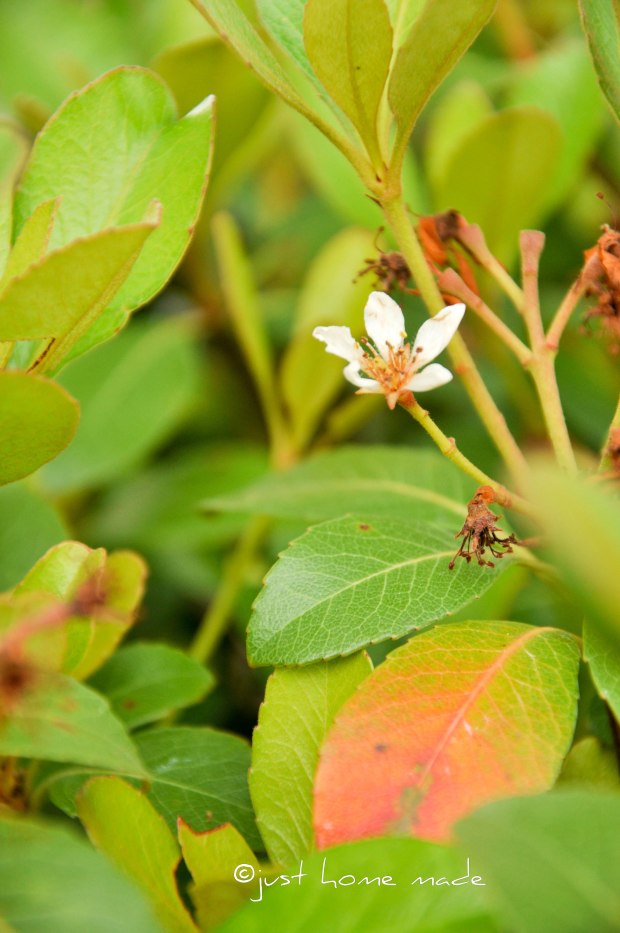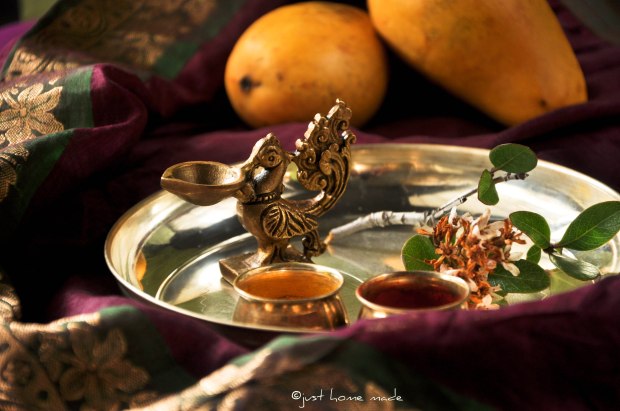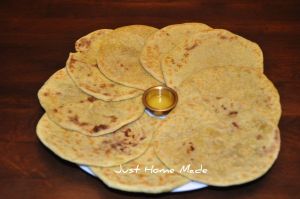Happy Yugadi!
On the eve of this special day, let me wish you in Kannada:
ಯುಗಾದಿ ಹಬ್ಬದ ಶುಭಾಷಯಗಳು – “Yugadi Habbada ShubhashayagaLu”
(Greetings for the festival of Yugadi)
or
ಹೊಸ ವರ್ಷದ ಶುಭಾಷಯಗಳು – “Hosa varshada shubhashayagaLu”
(Greetings on the New Year)
courtesy: Wiki
I wonder where March went?
Yugadi, the first day of the Hindu calendar celebrated as the Hindu New Year in Karnataka (also in Andhra and in Maharashtra as Gudi Padwa) is already here. Marked by fresh Neem flowers and leaves and the scent of tender Mango sprigs and doors decorated with festoons made of Mango leaves pinned next to each other with Neem sprigs at the corner (Taliru Torana), Yugadi is unique in the way it is celebrated and the seasonal changes it brings along.
Back at a time when we were kids and the mall culture was very much absent in India, a big festival like Yugadi (only second to Sankranthi on the english calendar year) was much-anticipated for not only the lip smacking festive menu but more so for the new clothes.
And to me, the best part of Yugadi was the lure of fresh Mangoes ripe and raw. Come Yugadi, it was a green signal to consume Mangoes although Mangoes hit the market earlier. It is believed (even now and is weirdly true) that Mangoes taste best (read sweet) only after the first rain of Yugadi.
Whatever said and done, nothing comes close to the revelry of the childhood days..
Yugadi in those days had its rhythm:
Tradition of starting the day with Abhyanga snana (head-to-toe oil (sesame and castor oil mix) massage followed by near-scalding hot water bath), how good it was!
Wearing new clothes adorned with a pinch of turmeric to mark an auspicious occasion
Witnessing Aaradhanai – a special pooja accompanied with rhythmic bell ringing performed by my Taatha (maternal grand dad) and receive Teertham (holy water)
Eating Bevu-Bella (a mix of Neem and Jaggery) with a bitter squint in the eye
Last but certainly not the least, feasting on each and every item on the festive menu, especially Obbattu
Yugadi is also the day of unveiling the new Panchangam (Hindu almanac).
Yugadi signifies leaving the old behind and ringing in the new.
Starting the day with a head to toe bath symbolizes “to start afresh” and the same is extended by virtue of wearing new clothes.
Bevu Bella (Neem – Jaggery) is essentially a symbolic of stark opposites, sweet and bitter or the representation of happiness and sorrow in life. It is a token of acceptance of the basic truth that Life is neither always sweet nor bitter and to begin the New Year with that expectation and accept both equally with good grace.
Where I am, I have access neither to Neem or the Indian Alphonsos. I get to celebrate Yugadi in all its vigor thanks to the Mexican Mangoes (not bad, you know!) and a small stash of dried Neem flowers, courtesy of a generous friend.
Once again, Wish you a very Happy Yugadi and a peaceful New Year!
The world has tasted enough bitter already, May this Yugadi bring sweet peace and compassion the world over.
Yugadi Festive Menu
Undoubtedly, Yugadi menu highlights seasonal produce – Mangoes.
Here’s a festive Yugadi menu suggestion from my kitchen to yours… Well, having grown up on such an elaborate one, I just couldn’t help it!
Bevu Bella (recipe follows)
Steamed Rice
Hesarubele Carrot Kosambari
Rasaayana
plain dal (paruppu)
Vaazhakkai Mor Kozhambu
Maangai Thokku
Nimbe Saaru (without garlic)
Kaduhu Ohre with grated green mangoes
Ambode (without onion)
Kharjoor Badam Kheer
Obbattu
Bevu Bella Recipe:
Things you’ll need:
- Neem flowers fresh or dried
- tender Neem leaves ~ optional
- Jaggery crushed or powdered
- Ghee
How it’s done:
Crush Neem flowers and tender Neem leaves with your finger tips and mix it with a dot of ghee and crushed jaggery in equal amounts.
Note Bevu Bella is eaten in small quantities, about 1/2 tsp per person, hence made accordingly.
You might also like:












